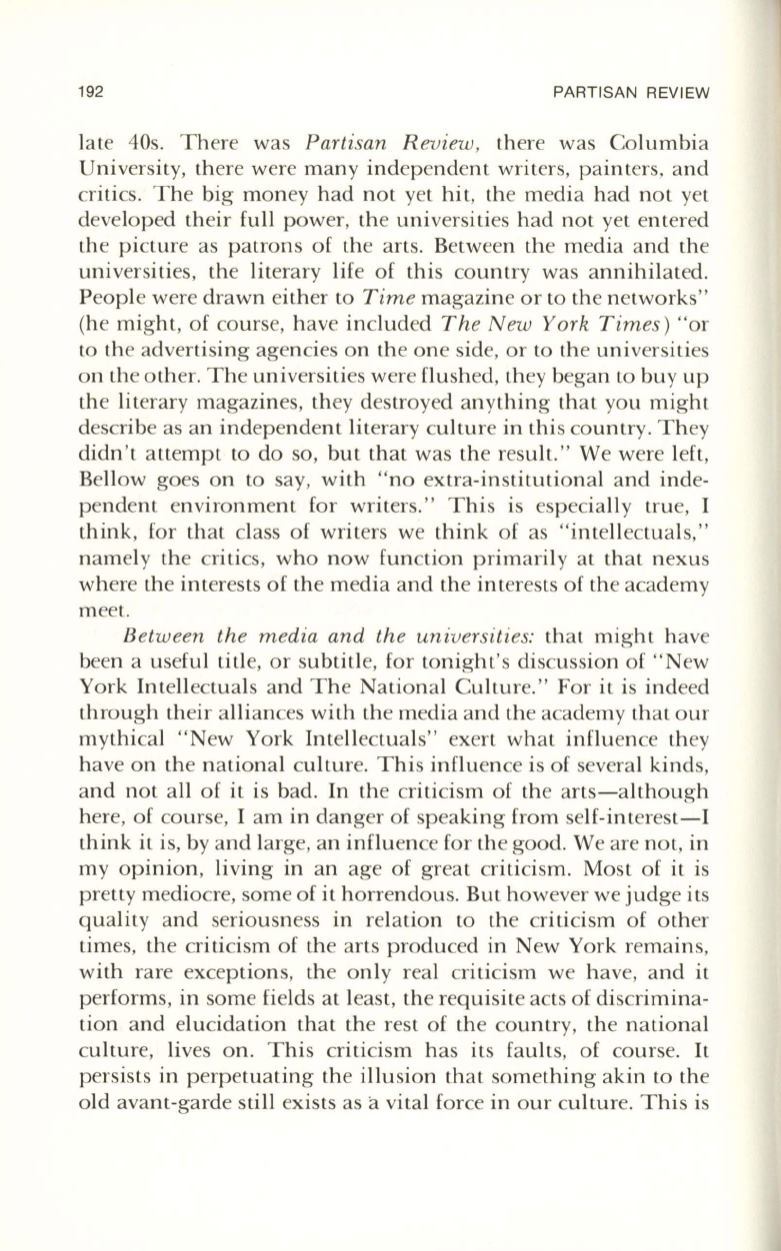
192
PARTISAN REVIEW
late 40s. There was
Partisan Review,
there was Columbia
University, there were many independent writers, painters. and
critics. The big money had not yet hit, the media had not yet
developed their full power, the universities had not yet entered
the picture as patrons of the arts. Between the media and the
universities, the literary life of this country was annihilated.
People were drawn either to
Time
magazine or to the networks"
(he might, of course, have included
The New York Times)
"or
to the advertising agencies on the one side, or to the universities
on the other. The universities were flushed, they began to buy up
the literary magazines, they destroyed anything that you might
describe as an independent literary culture in this country. They
didn't attempt to do so, but that was the result." We were left,
Bellow goes on to say, with "no extra-institutional and inde–
pendent environment for writers." This is especially true, I
think, for that class of writers we think of as "intellectuals,"
namely the critics, who now function primarily at that nexus
where the interests of the media and the interests of the academy
meet.
Between the media and the universities:
that might have
been a useful title, or subtitle, for tonight's discussion of "New
York Intellectuals and The National Culture." For it is indeed
through their alliances with the media and the academy that our
mythical "New York Intellectuals" exert what influence they
have on the national culture. This influence is of several kinds,
and not all of it is bad. In the criticism of the arts-although
here, of course, I am in danger of speaking from self-interest-I
think it is, by and large, an influence for the good. We are not, in
my opinion, living in an age of great criticism. Most of it is
pretty mediocre, some of it horrendous. But however we judge its
quality and seriousness in relation to the criticism of other
times, the criticism of the arts produced in New York remains,
with rare exceptions, the only real criticism we have, and it
performs, in some fields at least, the requisi te acts of discrimina–
tion and elucidation that the rest of the country, the national
culture, lives on. This criticism has its faults, of course.
It
persists in perpetuating the illusion that something akin to the
old avant-garde still exists as a vital force in our culture. This is


